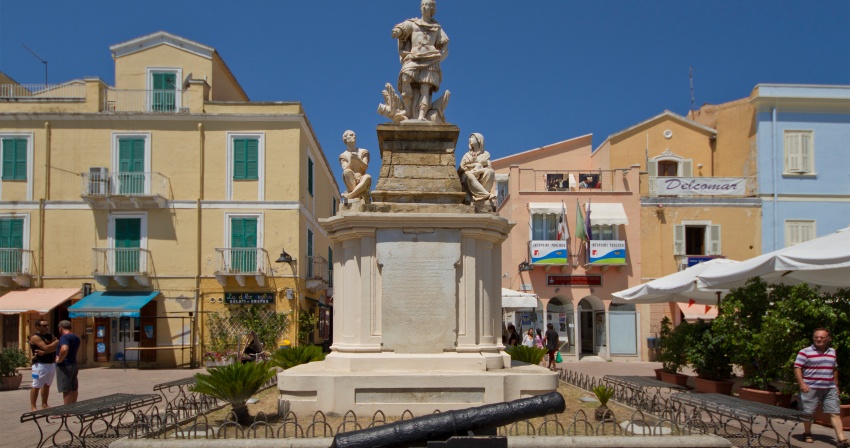Carloforte Renewable Energy Community: Launching in 2025
Interview with Gianluigi Penco, Councillor for Energy Policies of the Municipality of Carloforte: the original project has been reimagined, with the first Energy Community set to launch by 2025.
Date:
16 December 2024
The Renewable Energy Communities (RECs) are emerging as an innovative solution to promote the use of renewable energy in local communities, reduce carbon emissions and actively involve citizens in the energy transition. Sotacarbo firmly believes in the role of renewable energy communities for an ever-increasing sustainable future. Project Auree (Urban Energy Abacus of Buildings), funded by the National Electrical System Research, entails a series of activities by Sotacarbo to raise awareness and to involve citizens, businesses and local administrations to promote new opportunities to produce and consume energy in a different, beneficial way in the collective interest.
A key role in the dissemination of energy communities is played by municipalities, and it is their perspective and their experience that is the focus of several meetings within the project led by Sotacarbo. The meeting presented here is with the Councillor for Energy Policies of the Municipality of Carloforte, Gianluigi Mario Penco.
The Municipality of Carloforte, which has a population of around 6,000 residents, had almost completed the project to build an energy community in 2023. However, with the publication of Ministerial Decree No. 414/2023 (REC Decree) in January 2024, the process was interrupted. The administration was forced to rethink the project in order to comply with the new legislative requirements, launching a new technical-economic analysis whose conclusion is nearing the finish line.
For years, the Municipality of Carloforte has been trying to offer a tangible contribution in the fight against climate change, making the Island of San Pietro a real pilot site even on the study of energy production from renewable sources, as was the case with the recently concluded European “REACT” project. In particular, during this council term, the department of energy policies was established for the first time, and the creation of a renewable energy community has been a tangible objective in Carloforte's energy transition process.
After acquiring the necessary information on the topic, through specialised consulting and thanks to its long-standing collaboration with the Polytechnic University of Turin, the municipality assessed the opportunities provided by the establishment of a renewable energy community. The first step was to issue an expression of interest aimed at the population, including both residents and non-residents, with the primary goal of determining the potential size of the future energy community.
Communication and information to users played a primary role. Without the involvement of all stakeholders, the initiative would have floundered even before its launch. The administration has tried to communicate this information through the holding of public meetings broadcast via streaming - given that we also have many non-resident users - the establishment of a physical and telematic desk, and dissemination through all the institutional channels available: institutional website, social media, mobile phone app, notices on billboards.
We recently commissioned an external engineering firm to prepare the feasibility study. They have already presented a pre-feasibility study, analysing the utilities and municipal buildings that could potentially be utilised. After assessing the consumption of the participants in the expression of interest, the production required by the energy community will be estimated in order to obtain the most advantageous yield for the users. Finally, there will be the actual establishment of the energy community.
During the expression of interest, we collected more than 500 applications, a number that was frankly unimaginable, which among other things made it impossible to start the energy community before the CACER (Configurations of Self-Consumption for the Distribution of Renewable Energy) and TIAD (Integrated Text for Distributed Self-Consumption) decrees came into force. This was because it was not permitted to create energy communities with users connected to the same primary substation, but only to secondary substations. The complex regulatory framework held back the process of setting up the CER, but once this obstacle was overcome, we were able to tackle the technical part with the feasibility study.
Up until the commissioning of the feasibility study, existing consultancy agreements were utilized, along with the partnership with PoliTO (Polytechnic University of Turin) and the expertise available within the organization's staff, identifying a specific administrative area with its manager, and also appointing an administrative procedure manager. The study was financed in the amount of 14.000,00 € by the Region, so it can be said that to date the municipality has tackled the preliminary organisation of the energy community “at no cost”. Obviously, the Administration remains vigilant on all funding opportunities at various levels, community, state, regional, without ruling out the possibility of allocating budgetary funds in the future for the development of the REC.
In the initial phase we will use photovoltaic systems, which are cheaper, easier to operate and install. Due to the current regulations, only mini wind turbines with a maximum permissible power of 500 kW can join energy communities, which in addition to the impact problems are totally uneconomic. We will consider the possibility of installing a small hydroelectric plant at the Nasca dam, to be used as a reserve in case of need, as well as the possible use of biomass. Finally, we will see if the feasibility study shows the need to invest in storage systems, without excluding emerging technologies such as hydrogen and CO2 batteries.
According to the preliminary feasibility study available to us, municipal buildings could potentially host new photovoltaic systems with a capacity of 230 kW to be included in the energy community. These would be distributed across schools, the eco-center, gyms, municipal offices, and sports facilities, without ruling out the possibility of utilizing parking lots and other urbanized areas. Considering that the expression of interest revealed an approximate demand of around 300 kWp of installed capacity, if the Municipality were to account for 230 kW, the remaining 70 kW would fall to private entities. More realistically, it would be reasonable to assume a split of 200 kW for the Municipality and 100 kW for private entities.
If the energy community could be established as a result of the expression of interest, we would have over 500 utilities, 95% residential. The remaining consumers, apart from the Municipality, are about 20 restaurants, bars, bakeries, social services, some B&Bs and guest houses, offices, a veterinary clinic, and a marina. However, as these latter utilities have higher consumption than the residential ones, in relation to the total annual energy volume the incidence of the non-residential part is about 20% (200 MWh).
Great care will need to be taken in choosing the legal form of the energy community, especially because this is a public initiative, which involves not only standard civil law aspects but also public law considerations. There are various possible legal forms and in this sense there are already some rulings of the Court of Auditors that tend to legitimise cooperative-type associations, especially when there are shares held by Municipalities. The incentive scheme will be identified when the statute and regulations are drawn up, following the feasibility study. In any case, it will be inevitable to resort to some form of public consultation in order to arrive at a solution that is as agreeable as possible. Certainly as an administration we will give our guidelines, favouring the lower income brackets or those who do not physically have the possibility of installing systems, for example those who have a property on the ground floor or in a restricted area.
We plan to set up the energy community in early 2025, with the first objective being to allow all those who have signed the expression of interest, or at least as many users as possible, to be part of it. The long-term goal, which extends beyond the timeframe of this administration, is to make the Island of San Pietro "carbon neutral," and a widely implemented energy community would play a strategic role in achieving this.
The energy community is the primary objective of our energy policies. We are convinced that it is the ideal tool to fight energy poverty, improve citizens' quality of life and drastically reduce emissions. Furthermore, the Municipality of Carloforte has adopted its own Energy Transition Agenda based on a series of “pillars”, which in addition to the energy community include the implementation of sustainable mobility within the territory but also in the connections to and from Carloforte, as well as the valorisation of the energy hub of Nasca and the widest possible dissemination of RES (renewable energy sources), with the aid of storage systems. All this will necessarily have to be accompanied by a reduction in consumption, which can be achieved by making public and private buildings and public lighting more efficient, without neglecting the involvement of the population with the introduction of good practices in the conscious use of energy.
Essentially, I would recommend retracing a path similar to ours, focusing particularly, especially in the initial stages, on communication through all the social media channels at one's disposal and even more so, organising public sessions to concretely illustrate what this innovative tool represents and how the Energy Communities themselves can then concretely bring real benefits. It is a new and still poorly understood topic, requiring a strong communication and awareness campaign. Where internal resources are not available, it will be necessary to rely on specialized technicians and companies in the field.
Activity funded under the Ricerca di Sistema Elettrico Fund PTR 2022-2024.
Last update
13/01/2025, 09:01


